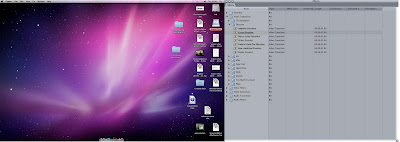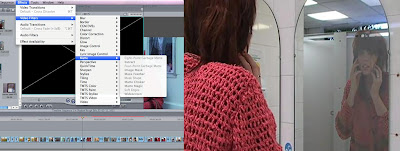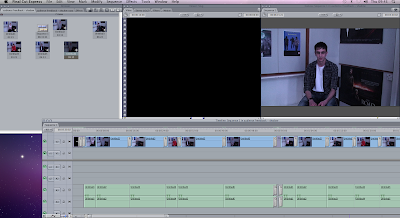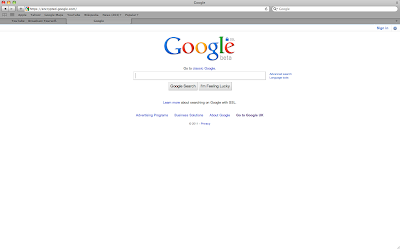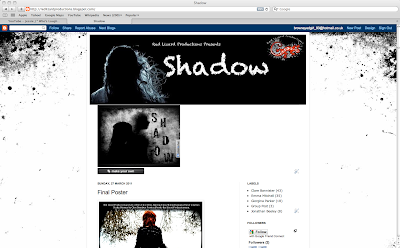1: In what ways does the media product use, develop or challenge forms and conventions of real media products?
Continuity is a majorly important convention to uphold, maintaining a solid concept of plot and character continuity is considered vital in modern day film. Whilst filming our production, we took careful observations to try and maintain a strong consistent level of continuity and avoid possible suspension of disbelief. Even with careful planning our continuity was not perfect, but any errors made were indistinguishable unless you were looking specifically for continuity errors, for instance a continuity error is the colour of Ruby’s bag which changes, as the original brown bag broke during filming, and we could only replace it with a black one on the day of filming.
Based on research into the generic conventions of a thriller film, our film’s main genre would be classified as a thriller due to our utilizing of generic conventions. A thriller films aim is to get the audience’s attention and keep them wanting more, we used a convention called a plot twist in our film to try and create this desired effect. A second generic convention of a thriller film we used was minor key music, which is often used in order to add to the suspense, mystery and overall atmosphere of the film. I believe our film fulfils the nature of the genre, we made no aim to deliberately subvert any expectations and we did not.
We did not deliberately use any elements of pastiche or parody in our production, our idea was completely original and drafted from a treatment made at the beginning of the term and our research into the thriller genre. Aspects of our film however could be seen to use elements of pastiche, for example our invisibility effect used could be considered pastiche of other thriller films using invisibility effects such as science fiction thriller Hollow Man.
The audience pleasure we were trying to achieve was based on Richard Dyers theory of entertainment, the aspect of intensity and the extremes of emotion’s invoked by the plight of Ruby Fox as she tries to regain her visibility and identity as well as coping with bullying. Our audience feedback showed we gained this aspect of intensity as a number of people spoke about how they related to the character through bullying after themselves being bullied in the past.
2: How effective is the combination of your main product and ancillary texts?
The main achievement we sought to obtain was to make our production a good short film, with a solid plot and storyline that would make people want to watch it and would invoke emotion into our audience using the bullying concept in our film. We wanted to broadcast a message through our production that said running away from a problem, or in Ruby Fox’s case turning invisible, isn’t a solution. We referred back to this in both our radio trailer and poster design. On the poster we utilized the tag line “All she ever wanted was to be invisible”, which refers to Ruby’s plight. In our radio trailer we also used this tagline to dramatic effect, using the voice of Ruby’s actor to whisper it in a chilling fashion. A second tagline we used in the radio trailer is “Sometimes your biggest wish could become your worst nightmare”, another referral to Ruby’s plight, and displaying her false judgment, that even though she in-avertedly ran away from her problems, it has only caused them to now worsen. The 2 taglines both help broadcast the message our production is trying to put across to our audience regarding bullying.
Radio Trailer Link
http://youtu.be/mFlHBuG5hos
3: What have you learned from your audience feedback?
Our initial step in gathering information for audience feedback was to create a questionnaire consisting of 9 questions, asking for answers rangin
g on subjects including the narrative of our film, the portrayal of bullying and improvements that could be made. We then let our prospective audience watch a rough edit of our production so they could answer the questionnaire; w
e filmed these answers using a Sony HDV 1000 camera and tripod. This helped us garner a concept of what our audience wanted to see, shows that we used genre conventions correctly and matched our set genre as well as how good they thought our film is overall.
After gathering feedback using this method, our group then separately conducted audience feedback sessions using social networking site http://www.facebook.com/. I constructed a template message which I sent to people asking them to kindly take the time to watch our rough edit which a link to was included and answer 6 questions on the film. This feedback gathered helped us to decide what the key things to strengthen were in the final cut of our production. With the assistance of audience feedback overall I think we made our film realistically believable and well adapted within the conventions of our chosen genre.
4: How did you use new me
dia technologies in the construction and research, planning and evaluation stages?
In the initial stages of starting blog work, one of the new technologies to adapt to using was the iMac interface and operating system, as primarily I have been a user of Windows and Linux operating systems and interfaces at home, school and college. Some of the new things I had to adapt to were new keyboard shortcuts, as I am quite adept using them on windows systems however they aren’t always strictly the same on iMac. Another feature to adapt to is the lack of a start bar, which is a pivotal feature of windo
ws systems and a very unusual change to a regular user, as apart from desktop shortcuts it is where you would access all of your programs, documents and other forms of files from.
For research, I usedvarious search engines such as http://www.google.com/, www.imdb.com and http://www.wikipedia.com/ to research films, film genres, generic conventions, distributors and various other things. I also made use of the site http://www.blogger.com/ to keep an online textual and multimedia log of our work. I felt using a blogging site helped improve my blogging skills immensely as I had no previous experience of blogging, giving me a skill that could be very useful for the future.
To create our film, we used a Sony HDV 1000 camera and tri-pod. Using the HDV was a massive change from using the smaller handheld cameras, it gives a massive improvement in terms of visual quality moving from what felt like an amateur quality to a more professional quality, however manoeuvrability is impaired due to the HDV being around 4 times the size of a handheld camera. The range of shots we could confidently use was improved using the HDV, as the lower quality of the handheld cameras previously used was an issue when it came to smaller more concise details we wanted noticing, or longer shots as again smaller details that are in the distance are harder to make out. Another strength of the HDV was the sound capturing quality it provided, which was a great deal clearer than the handheld cameras.
To edit our production we made use of exclusive apple iMac application software, a non linear video editing piece called Final Cut Express, which is designed for the purpose of advanced editing of digital and high definition video. It is used by amateurs and professional videographers and media personnel alike.
Using this software helped increase my creative skills and my understanding of editing film, including the different tools used in the software for instance transitional effects and the many methods of editing. The professional standard stood out compared to other video editing software I have used, for instance windows movie maker, offering more complexity and finer more detailed editing, further showing an increase in my skills.
For the final poster design, we used graphic image manipulation software package Adobe Photoshop, a very commonly used and high standard piece of software, well known for its user friendly tools. We used this program to insert text, images such as distributors and age certification logo, resize and cut our image, use tools to change the contrast and various other things.
For my own poster design however, I chose to use Adobe Fireworks, which I had previously used to create animated graphics for web design and other various tasks such as creating radio buttons and image optimization. I chose to use this programme as I had used it before to create simple images or animations, but I wanted to see how I could edit and manipulate images using the programme. Using Fireworks, I took a screenshot from our film and used various effects such as grey scaling the image to make the atmosphere more dark and moody to suit our genre. This further developed my skills using a piece of software I was already familiar with but using tools and features I had never been required to utilize before.
For the radio trailer, we used a piece of equipment I had never heard of before called a zoom recorder to record our scripted lines in a sound proofed room. We then imported the recording onto an iMac and used a piece of application software called Garageband to edit the required pieces of sound from the recording. I had no previous experience using this software however after doing some research using a search engine I discovered how to do so. This improved my skills using this particular piece of software, and my researching skills using the internet as I had to filter through a lot of websites containing non-essential search results.
Overall, I feel that new media technologies have helped improve my creativity as a whole, helping me develop new skills in sound recording and image manipulation, and further develop skills in filming, editing film, using unfamiliar operating system interfaces, conducting research using the internet and blogging skills. We have created various pieces of work to professional standards and an end product of undoubted quality using our developed skills and creativity.



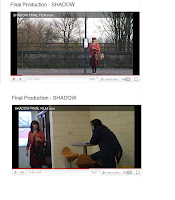 and so it would make sense to them. So with this in mind we kept a conscious watch on anything that could break the continuity in the film. However, throughout filming we found that minor problems occurred which broke the continuity, mainly things like props broke the continuity, for example, at the beginning of the film you will see the main character with a brown bag, however later on she has a black bag, this is due to the fact that half way through filming the original brown bag broke so we had to find another bag in time for filming. Throughout our film we have kept to the 180 degree rule, making sure that even when re filming or editing we did not change the 180 degree shot. Also we used different shots used in media productions; these are eye line match, graphic match.
and so it would make sense to them. So with this in mind we kept a conscious watch on anything that could break the continuity in the film. However, throughout filming we found that minor problems occurred which broke the continuity, mainly things like props broke the continuity, for example, at the beginning of the film you will see the main character with a brown bag, however later on she has a black bag, this is due to the fact that half way through filming the original brown bag broke so we had to find another bag in time for filming. Throughout our film we have kept to the 180 degree rule, making sure that even when re filming or editing we did not change the 180 degree shot. Also we used different shots used in media productions; these are eye line match, graphic match.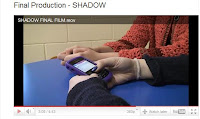
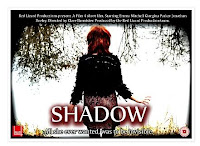 information, Image. All of which are included in all of existing film posters.
information, Image. All of which are included in all of existing film posters.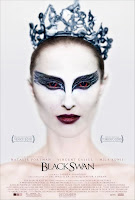
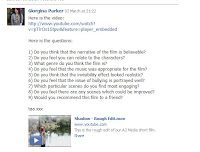 4) How did you use new media technologies in the construction and research, planning and evaluation stages?
4) How did you use new media technologies in the construction and research, planning and evaluation stages?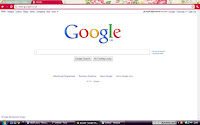
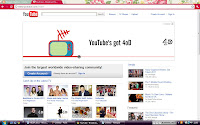
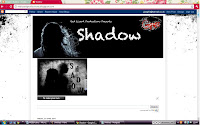 To make our film I used a Sony HDV camera and Tri-pod to film the scenes in the film. By using these I have improved my camera skills and have a better knowledge on how to
To make our film I used a Sony HDV camera and Tri-pod to film the scenes in the film. By using these I have improved my camera skills and have a better knowledge on how to To create our radio trailer for our film Garage Band was used. We used a zoom recorder to record the sound for our radio trailer and then added it to the software to create an effective radio trailer. I now feel that I am more confident in using these different software, enabling me to confidently use them in the future and not have to worry about not being able to use them.
To create our radio trailer for our film Garage Band was used. We used a zoom recorder to record the sound for our radio trailer and then added it to the software to create an effective radio trailer. I now feel that I am more confident in using these different software, enabling me to confidently use them in the future and not have to worry about not being able to use them.
